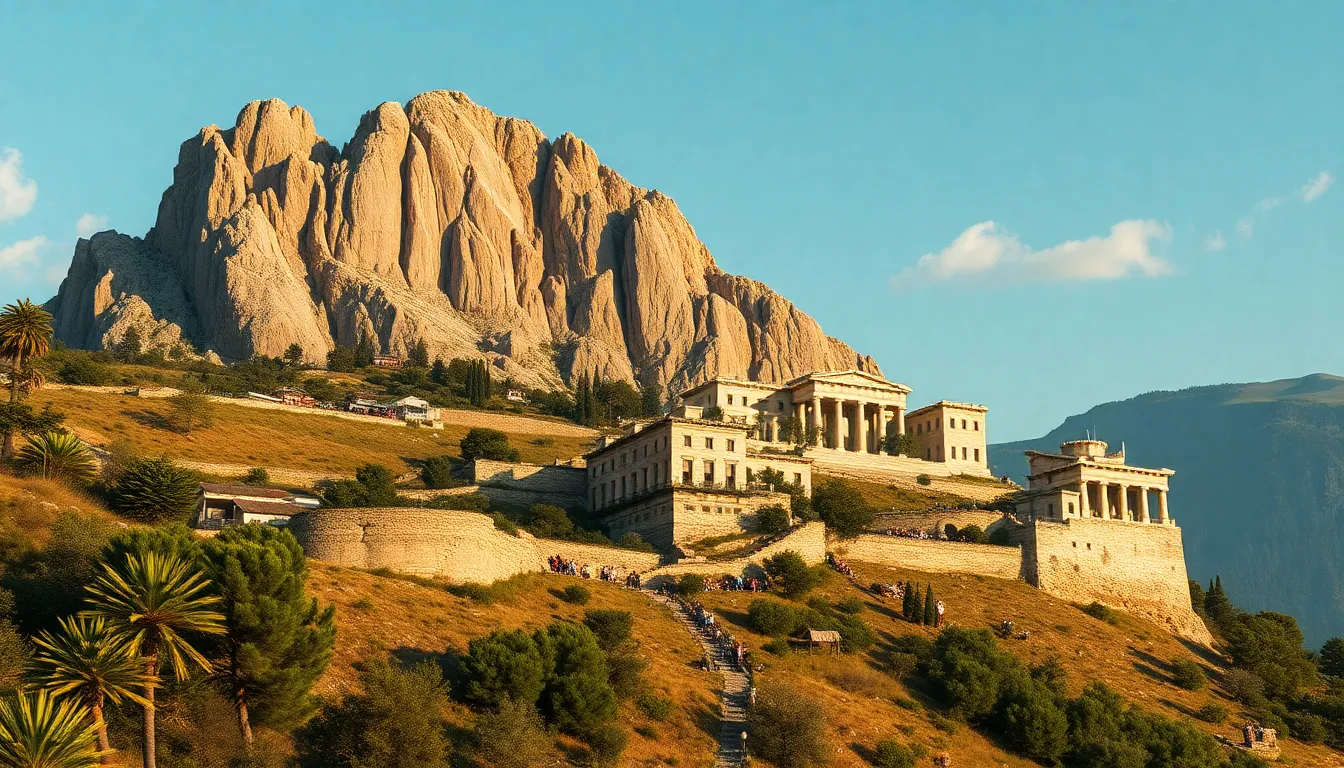The Myths of Mount Parnassus: From Ancient Times to Today
I. Introduction
Mount Parnassus, a majestic peak in central Greece, stands tall as a symbol of inspiration and divine influence in Greek mythology. Revered for its beautiful landscapes and rich cultural history, Parnassus has become synonymous with the Muses, art, and the sacred Oracle of Delphi. This article aims to delve into the myriad myths surrounding Mount Parnassus, tracing their origins from ancient times to their interpretations in modern culture.
II. Historical Significance of Mount Parnassus
Mount Parnassus was not only a geographical landmark but also a cultural and spiritual center in ancient Greece. It was located near the ancient city of Delphi, which was considered the center of the world by the Greeks.
- Geographical Context: Rising to 2,457 meters, Parnassus is part of the Phocis region and is characterized by rugged terrain, deep ravines, and lush vegetation.
- Cultural Role: It served as a hub for poets, philosophers, and artists, who sought inspiration from its heights and the mysteries it held.
- Delphic Oracle: The Oracle of Delphi, dedicated to Apollo, was situated at the foot of Parnassus. This oracle was a pivotal institution in ancient Greece, offering guidance and prophecies.
III. The Myths of Parnassus: The Birth of the Muses
One of the most significant myths associated with Mount Parnassus is the birth of the Muses, the nine goddesses who preside over the arts and sciences. According to legend, the Muses were born from the union of Zeus and Mnemosyne, the goddess of memory.
- The Nine Muses:
- Calliope: Muse of epic poetry
- Clio: Muse of history
- Erato: Muse of love poetry
- Euterpe: Muse of music
- Melpomene: Muse of tragedy
- Polyhymnia: Muse of sacred poetry
- Terpsichore: Muse of dance
- Thalia: Muse of comedy
- Urania: Muse of astronomy
The Muses were believed to reside on Parnassus, inspiring artists and poets throughout ancient Greece. Their influence helped shape literature, music, and art, making Parnassus a vital source of creativity and knowledge.
IV. The Tale of the Flood and Deucalion
Another prominent myth associated with Mount Parnassus is the story of Deucalion and Pyrrha, which recounts a great flood sent by Zeus to cleanse the earth of its wickedness. Deucalion, the son of Prometheus, was warned of the impending doom and built an ark to save himself and his wife, Pyrrha.
As the floodwaters rose, they sought refuge on the summit of Mount Parnassus. This myth carries profound symbolism:
- Refuge: Parnassus served as a sanctuary in times of destruction.
- Rebirth: After the flood, Deucalion and Pyrrha repopulated the earth, symbolizing renewal and hope.
- Divine Intervention: The story highlights the relationship between humanity and the divine, emphasizing themes of punishment and redemption.
V. The Role of Parnassus in Roman and Later Literature
Mount Parnassus continued to be a source of inspiration beyond Greek mythology, influencing Roman literature and art. Notable adaptations include:
- Virgil: In his work “Georgics,” Virgil invokes the Muses and references Parnassus, emphasizing its role as a source of poetic inspiration.
- Ovid: Ovid’s “Metamorphoses” also reflects the influence of Parnassus, linking it to themes of transformation and creativity.
The Renaissance period saw a revival of interest in classical themes, with artists and writers drawing upon the myths of Parnassus to inspire their works. This influence is evident in the art of painters like Raphael and poetry by figures such as John Milton.
VI. Contemporary Myths and Cultural References
In modern literature and media, Mount Parnassus continues to be depicted as a symbol of inspiration and artistic endeavor. Contemporary references can be found in various forms:
- Literature: Authors often allude to Parnassus when discussing creativity, highlighting its legacy as a source of artistic inspiration.
- Film and Television: Parnassus serves as a backdrop for stories exploring themes of creativity, myth, and the divine.
- Music: Several musicians reference Parnassus in their lyrics, linking it to concepts of inspiration and beauty.
The enduring legacy of Parnassus illustrates how ancient myths continue to shape contemporary storytelling, bridging the gap between past and present.
VII. The Symbolism of Mount Parnassus in Philosophy and Spirituality
Beyond its mythological narratives, Mount Parnassus has served as a metaphor for higher pursuits in philosophy and spirituality. Its symbolism encompasses:
- Inspiration: Parnassus is often viewed as a source of divine inspiration, where artists and philosophers seek enlightenment.
- Philosophical Thought: Ancient philosophers, including Plato, associated Parnassus with the pursuit of truth and knowledge.
- Spiritual Movement: Throughout history, Parnassus has been a symbol of spiritual elevation, where individuals aspire to reach greater heights of understanding.
The ongoing significance of Parnassus in discussions of creativity and spirituality highlights its universal appeal as a symbol of human aspiration.
VIII. Conclusion
The myths of Mount Parnassus encapsulate the rich tapestry of Greek mythology and its enduring influence on art, literature, and culture. From the birth of the Muses to the flood of Deucalion, these stories reflect the themes of inspiration, renewal, and the relationship between humanity and the divine.
As we explore the significance of these myths, it becomes evident that preserving and understanding these narratives is crucial, as they continue to resonate in our modern world. Mount Parnassus remains a beacon of creativity, reminding us of the timeless power of stories to inspire and connect us across generations.




